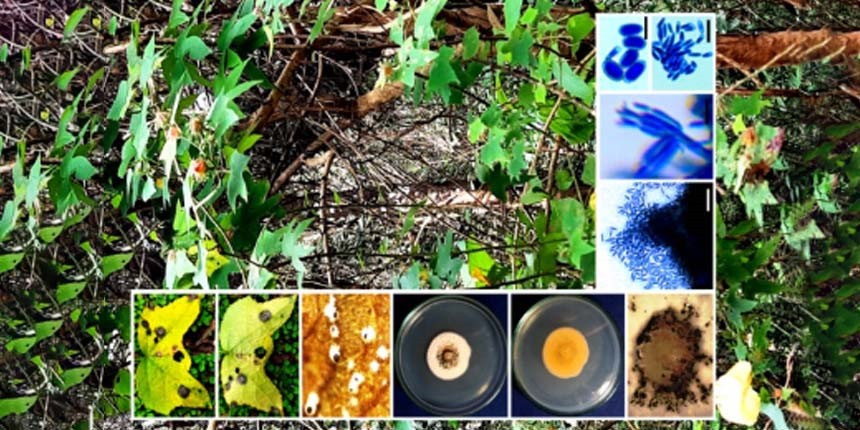Paramyrothecium indicum

Disclaimer: Copyright infringement not intended.
Context
- Scientists have discovered a new species of fungus in Kerala named as ‘Paramyrothecium indicum’.
Details
- Named after India, ‘Paramyrothecium indicum’ (Ascomycota, Stachybotryaceae), is a new species of phytopathogenic fungus.
- It exists as a parasite on plants and is associated with emerging leaf spots on the wild hibiscus plans near Peechi-Vazhani Wildlife Sanctuary in Thrissur district of Kerala.
- Phytopathogen fungi are responsible for “serious plant diseases which might negatively affect crop productivity”.
- Most of the Paramyrothecium are phytopathogens, a parasite surviving on a plant host.
Importance of Paramyrothecium indicum
- The scientists have pointed out that the Western Ghats region of Kerala is renowned for its abundant fungal diversity, including numerous species endemic to the specific area.
- The climatic conditions, rainfall, and phanerogamic vegetation are congenial for the growth and development of different kinds of pathogenic and non-pathogenic fungi
- This finding underscores the importance of ongoing exploration and research into the diverse flora, fauna, and fungi in the Western Ghats.
- Paramyrothecium leaf spots are a type of fungal disease that can affect a variety of plants. To control and manage these leaf spot diseases, they said, surveillance and early detection of causal agents is essential.
- The disease can be prevented by pruning and removing infected leaves to reduce the source of infection.
- Because this infects all plant leaves within a short time once climatic conditions are favourable.
- Some biological preventive solutions are available in the market that can be used for the control of this disease.
- In severe cases, fungicides can be very effective for the control of Paramyrothecium leaf spots.
- The scientists have also observed that “some species of Paramyrothecium produce secondary metabolites with bio-herbicidal potentials” and, therefore, may find application in controlling weeds. However, this characteristic requires further exploration.
|
FUNGI Fungi, a distinct biological kingdom, are crucial for ecosystems and human activities. Understanding their roles is vital for biodiversity comprehension. Classification:
Ecological Roles:
Economic Importance:
Disease and Health:
Biodiversity Hotspots:
|
|
PRACTICE QUESTION Q. What is "Paramyrothecium indicum," recently discovered in Kerala? a) It is a newly identified species of amphibian in Kerala. b) It is a novel genus of flowering plants endemic to the Western Ghats. c) It is a phytopathogenic fungus associated with leaf spots on wild hibiscus plants. d) It is a microorganism with potential bio-herbicidal properties found in the Western Ghats. Correct Answer: c) It is a phytopathogenic fungus associated with leaf spots on wild hibiscus plants. |




1.png)
